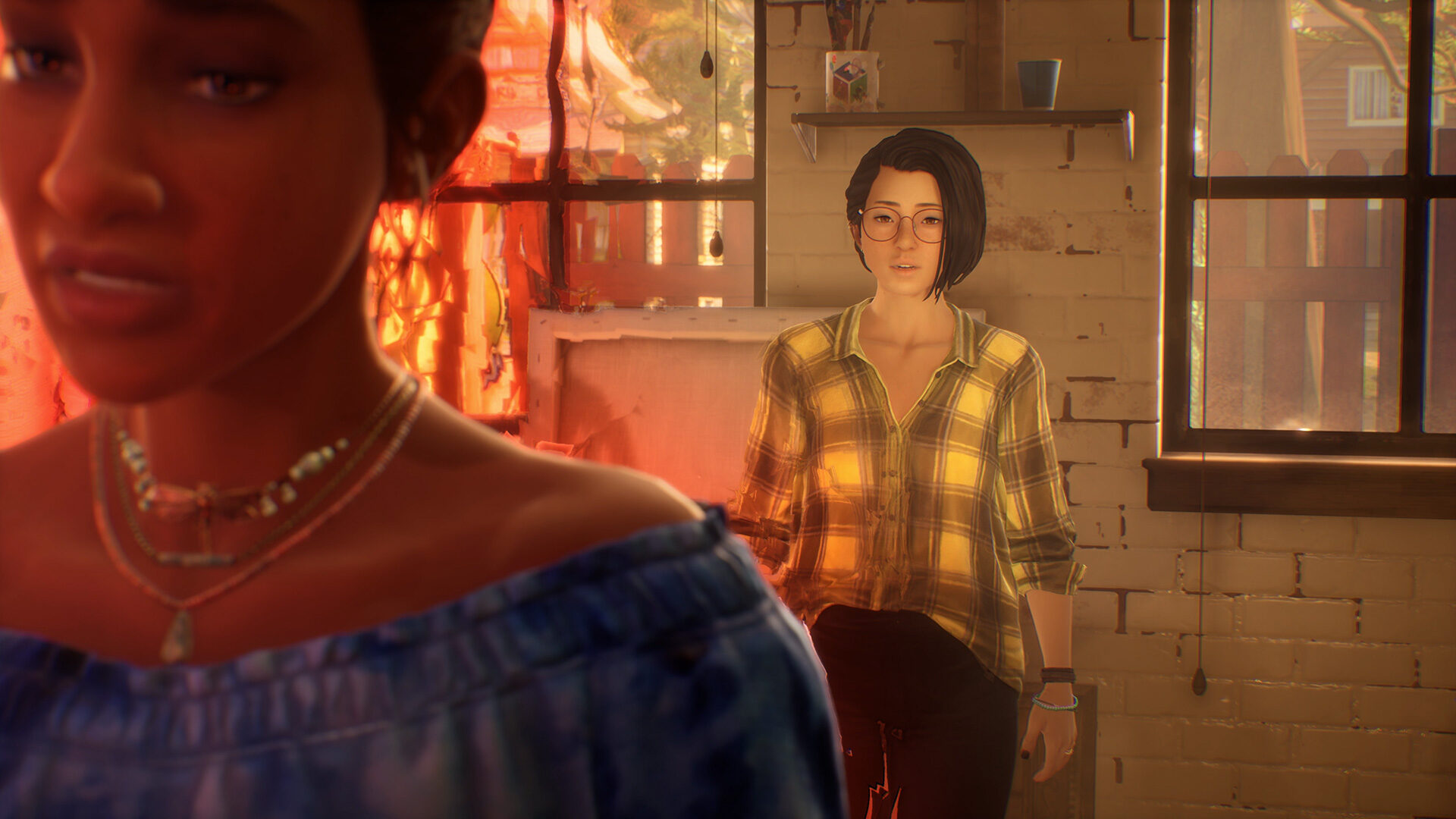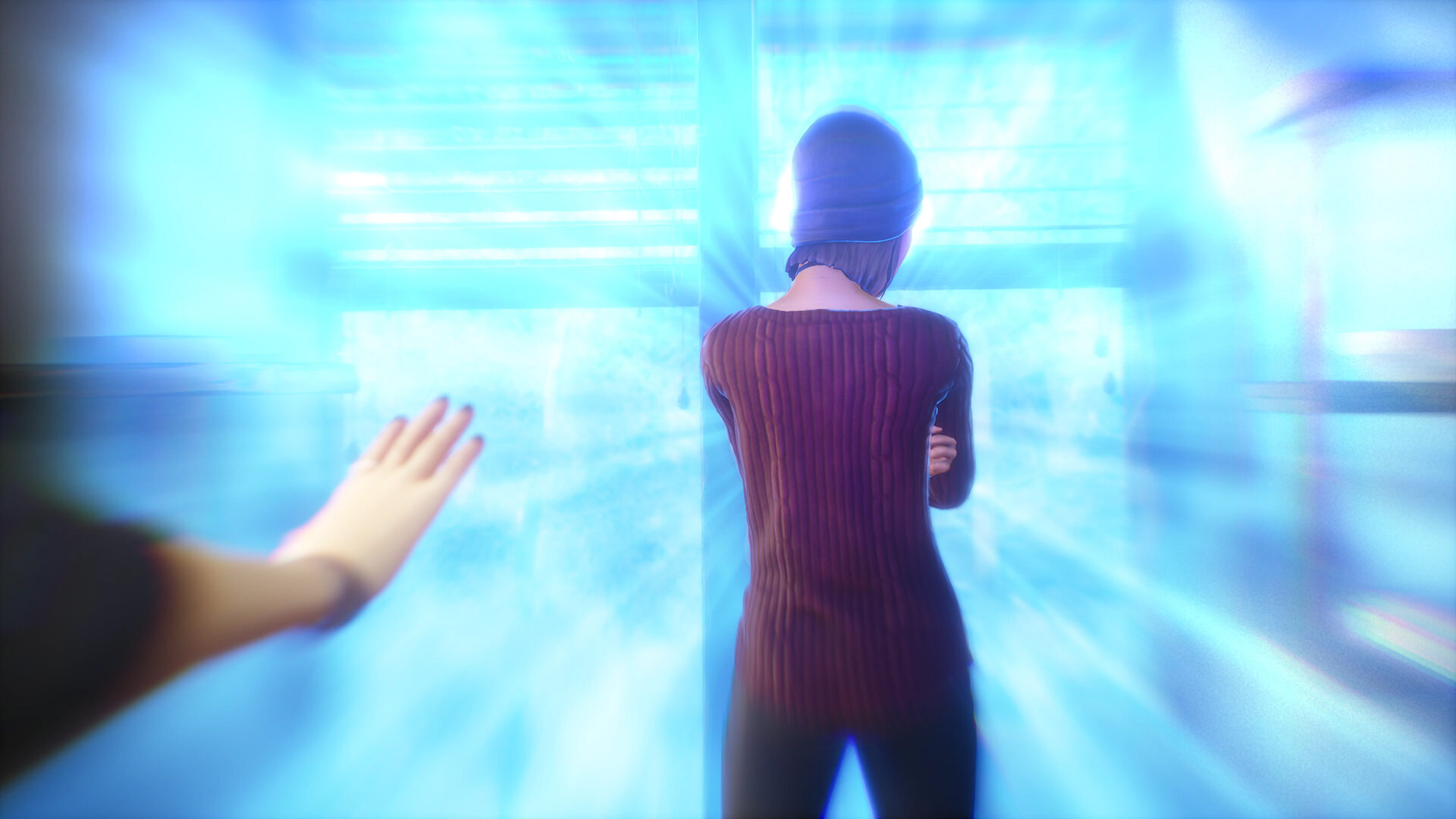A narrative trick that the Life is Strange series has always managed to get away with is not having to explain how its superpowered protagonists got their gifts. How did Max Caulfield develop the ability to turn back time? How does Daniel Diaz move stuff with his mind? The how doesn’t matter because Life is Strange mostly focuses on the when. Max discovers her power when she’s trying to save Chloe’s life, and Daniel unleashes his power for the first time to protect his father from a racist police officer. Life is Strange’s heroes receive their powers when they need them the most and understand them the least.
But the other key to Life is Strange’s superpowered teenagers is that their powers represent a key facet of their journeys. Max’s rewind represents her returning to her past in the form of Arcadia Bay and Chloe, and trying to fix mistakes or right old wrongs. Daniel’s powers, meanwhile, serve as a metaphor for his older brother Sean’s journey, who has to deal with the burgeoning agency that his younger brother feels while also protecting him from the external forces of the world that would see a young child put behind bars.
For better and for worse, Life is Strange: True Colors’ Alex Chen is a much different kind of Life is Strange protagonist. Unlike Max and Daniel, Alex has known about her ability to see other people’s strong emotions as colored auras and listen to these feelings for a while before her Life is Strange journey even begins. Where Max and Daniel are eager to explore their newfound powers, Alex sees her ability as a curse and has worked hard to shut it off. By the time True Colors starts, Alex is 21 years old, almost 22, and has already experienced a tumultuous childhood and adolescence, bouncing between foster homes and orphanages.
But the biggest difference between Alex and previous Life is Strange protagonists is how her superpower fits as a metaphor within her journey. There isn’t necessarily a neat and tidy connection between what Alex can do and what she’s facing. What Alex is looking for is a place to call home, where people will accept her, a place where she can put down roots and feel safe. In some ways, that’s what her trip to Haven Springs, where she’s reunited with her estranged brother, Gabe, can represent.

From the outset, Alex is presented as friendly, charismatic, and personable. She seemingly has no problem ingratiating herself to the people of Haven Springs, and she quickly forms relationships with everyone she meets in town. There’s no sense that she doesn’t trust Gabe, or Ryan, or Stephanie, or any of the other characters she meets, and there’s no sense that she has trouble connecting with them, either. Nor does she seem to have trouble seeing the world from their viewpoint—the kind of personality flaw or hurdle that having superpowered empathy would help clear.
It takes too long for the story to reveal that the challenge that her own superpower represents is her capacity to feel too much. At the start of True Colors, Alex does everything she can to suppress her superpower—she doesn’t want to feel anything but the hope that the trip to Haven represents. Throughout the game, she gradually begins to rely on this ability more and more, sometimes to help others, but mostly to discover the truth about Gabe’s tragic and mysterious death. She’s constantly told that she’s special, while still feeling like a freak, but in the end, she has to face her own traumas before she can fully accept herself and her ability.
In theory, having the climax of the story revolve around Alex coming to terms with her past so that she can fully embrace herself and her powers, works. But it also comes after several chapters of the player already using Alex’s power as much as they’re allowed to. Sometimes, she experiences people’s deepest feelings of sorrow, anger, fear, and joy so that she can help them find the courage to face their own truths. Most of the time, however, she’s using it to gain inside information about why her brother died so that she can nail those who she deems responsible for his death.
For us as the player, tapping into the inner lives of the other characters is as easy as holding a button. It’s a controlled and frictionless experience that does not mirror that of the protagonist—a special, quieter type of ludonarrative dissonance. Alex isn’t professing to be a good person while killing thousands of faceless enemies, as that phrase generally indicates; she professes to have trouble with her unique talent while using it couldn’t be any simpler for the player. By taking the moment where Alex discovers her power and hiding it in backstory, the player doesn’t get to experience the emergence of these colorful auras alongside her. Instead, we have to trust what the story is telling us, while what we’re experiencing tells us something else.
Pacing is another problem when it comes to True Colors’ story. The inciting incident comes early in previous Life is Strange games, so that the rest of their respective chapter ones have time to start their stories in earnest. In True Colors, though, Gabe’s shocking and brutal death comes at the very end of the first chapter. Giving Alex and Gabe time together is necessary to provide the player with an emotional motivation for discovering the truth behind his death, but it also means the story doesn’t even start until the end of the first chapter. Compared to the first Life is Strange, which puts the inciting incident as close as possible to the beginning of the game and then lets its various plot threads branch out from there, True Colors’ feels so singularly minded because of how it starts. There’s Gabe’s death, the grief over Gabe’s death, an unnecessary romantic subplot, and an undeveloped and uncomplicated plotline about Alzheimer’s that, while tragic, barely pays off. There’s also a chapter in the middle of the game that is almost entirely dedicated to a live-action roleplay involving most of True Colors’ key characters that would have been great in a game that gave more time to the rest of its more compelling story elements. As it is now, that chapter just takes up way too much time that would have been better served elsewhere.
In essence, True Colors feels more like a spin-off than a mainline entry, and a lot of that has to do with Haven Springs itself. The small town atmosphere is pivotal to the story that True Colors tells, but the game’s adherence to its setting makes everything feel claustrophobic. It’s not just that True Colors is set almost entirely in one place; the first Life is Strange did the same thing with Arcadia Bay. Rather, it’s how the game and the plot utilize the town. Life is Strange had Max and Chloe hopping from one point of Arcadia Bay to another in Chloe’s beat-up truck, making the town feel both small and open, the whole world and just a small part of it at the same time. In True Colors, you can fully walk around Haven Springs, go in and out of buildings, but only the one block of the town that the game lets you explore, and only a few interiors that you will revisit again and again. Because the story keeps you tied to such a small place, Haven Springs feels like a limitation rather than a feature. It’s especially ironic considering the vast mountainous vista that surrounds the town, dominating the landscape. Mountains seem so small when viewing them from such a distance, and so too does the world that Alex inhabits.

In the end, though, Life is Strange games live and die by their characters, and Alex certainly ticks all the boxes of a good protagonist for the series. She’s introspective, thoughtful, confused, anxious, inquisitive, artistic, and sensitive, and she cares about the people around her, with or without her superpowered empathy. The supporting cast, too, has its standouts, especially in Stephanie and Ryan, Alex’s cohorts in uncovering the truth about Gabe’s death as well as her potential romantic interests. Ryan has lived in Haven Springs all his life but only found a brother when Gabe moved to town. Stephanie, meanwhile, was transient her entire life until Gabe made her feel that she belonged. If the Life is Strange series is most notable for just how much it gets you to care about its characters, despite the flaws of its plot lines, then True Colors does the franchise justice in that regard. And, from a representational standpoint, Alex is vital in the video game landscape—another series tradition carried on.
True Colors also benefits from an enhanced engine. The game’s visuals provide much more detail for both the characters and the scenery while still managing to maintain the series’ softer, unmistakable look. From a purely visual standpoint, Haven Springs is absolutely stunning—just looking at it makes it clear why so few people who come to the town want to leave. But it’s in the full motion capture performance and improved facial animations where True Colors really comes to life. You get the sense that the actors were finally allowed to fully do their job, while taking some of the acting onus away from the animators. If you squint, you can almost convince yourself that some of the cutscenes are live-action. The technological advancements used to create True Colors allow the artists at Deck Nine to bring Life is Strange to, well, life like never before.
Despite its faults, Life is Strange: True Colors does feel like it earns the franchise’s title, even if in a more limited capacity than it should. Having taken over from series creator Dontnod, Deck Nine—which previously developed Life is Strange: Before the Storm—still has a ways to go if it wants to create a Life is Strange title that doesn’t feel secondary. But it does understand the purpose of a Life is Strange game, which is to make you feel something. More than any other series, Life is Strange makes you believe that its characters and the world they inhabit constitute a real, lived-in life—through what the characters say, what they think, and what they observe, the random detritus of lives lived. True Colors certainly doesn’t reach the heights that its predecessors have, but it’s a good reminder that Life is Strange is still as vital a series as any in the video game medium.

Images: Square Enix
|
★★★☆☆
Life is Strange: True Colors has a lot of the ingredients that make the series so beloved, most notably in its compelling protagonist. Technical advancements for the series bring its story to life with fantastic performances and a keen eye for detail. Unfortunately, the story it brings to life is full of stutters and stops, and takes far too long to develop. Where Life is Strange games are full of movement, True Colors feels painfully stagnant for too long. |
Developer Deck Nine Publisher Square Enix ESRB M - Mature Release Date 09.10.21 |
| Life is Strange: True Colors is available on Xbox Series X/S, PlayStation 5, Nintendo Switch, Xbox One, PlayStation 4, PC, and Google Stadia. Primary version played was for PlayStation 5. Product was provided by Square Enix for the benefit of this coverage. EGM reviews on a scale of one to five stars. | |

Michael Goroff has written and edited for EGM since 2017. You can follow him on Twitter @gogogoroff.